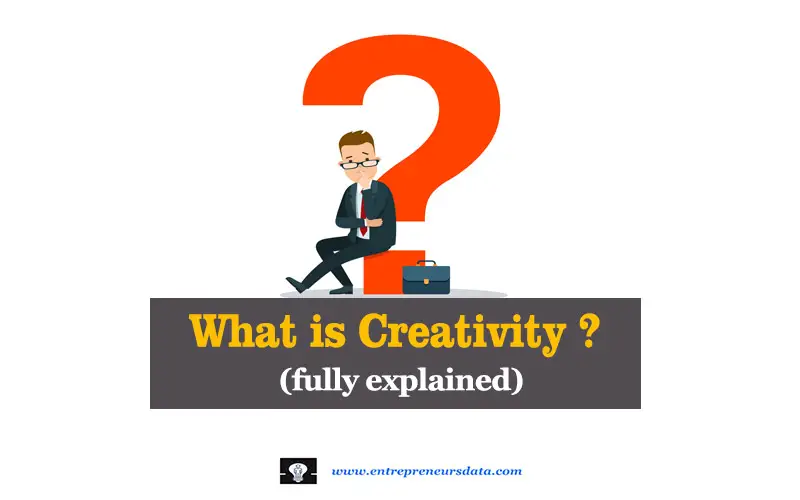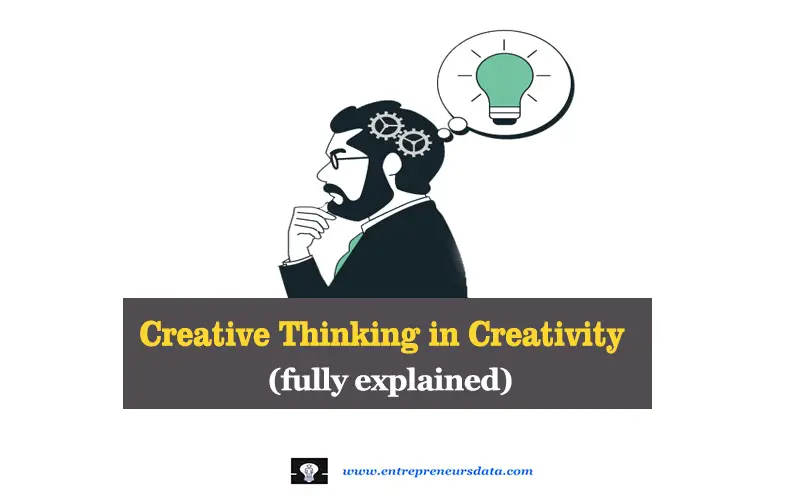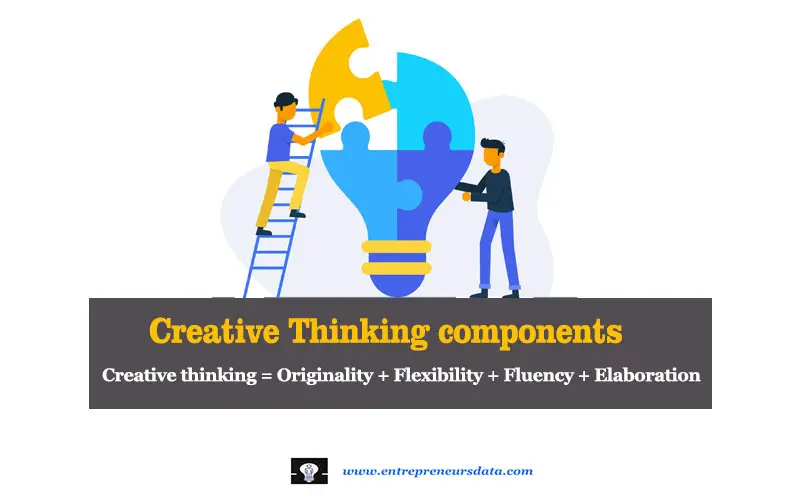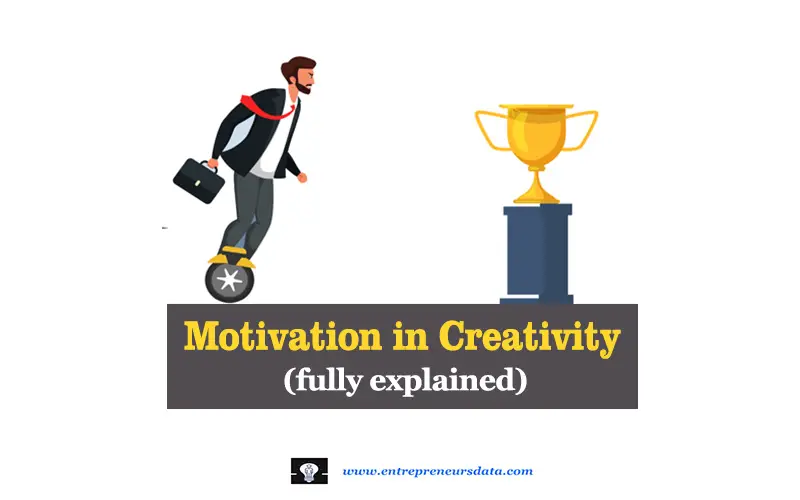Albert Einstein defined creativity as the capacity to see and think beyond the perspectives of others. It is essential for problem-solving and innovation in entrepreneurship. Especially for business growth. This article explores the essence of creativity. Also, its application, and key principles for entrepreneurs to effectively nurture and apply creativity in their ventures.
What is Creativity

Creativity is defined as the creation of a valued, useful new product, service, idea, procedure, or process by persons working together in a composite social system.
Creativity can take various forms. It is the capacity to create or innovate something novel, the skill to make something novel from nothing. It is also the generation of new and inventive ideas or an inimitable application of old ideas. Adapting, combining, application of present ideas also need creativity.
More definitions for creativity – Click here
Various Principles of Creativity
Every person is creative and capable of creativity. Within every individual, creativity is a function of three main principles. Those three functions are principles of creativity in entrepreneurship. Those are,
- Expertise
- Creative thinking skills
- Motivation
Expertise in Creativity
Expertise includes the knowledge of a person. It means intellectual knowledge, practical knowledge, and technical knowledge are all combined. Frequently, it talks about all the knowledge an individual has in a specific field.
Expertise and creativity have a close Relationship. While it is not vital to have the creativity to reach expertise in one’s field, the opposite tends to be true. Creativity commonly does demand some degree of expertise.
For example – In music tutoring, a certain set of skills is necessary to be in place to flourish as a tutor, such as musicality, music knowledge, instrument playing skills, people skills, planning, assessment, and classroom management.
Expertise includes everything that a person knows and can do in the broad field of his or her work- knowledge and technological capability. Creative thinking directs how you approach issues and answers- the ability to put current ideas together in renewed combinations. The skill itself relies quite a bit on personality as well as on how someone thinks and works.
Expertise and creative thinking are the entrepreneur’s basic materials or natural resources. Expertise is very field-specific. To become an expert, one needs to learn or perform in a field. Usually for a relatively long time, although that differs by field. And there is a small logic to expect that one’s hard work acquiring expertise in a given field will move readily to other fields.
Everyone rightly appreciates interdisciplinary thinking, but interdisciplinary thinking needs disciplinary learning in more than one field. It does not indicate thinking that neglects disciplines. One may occasionally be able to integrate expertise in several fields to solve problems in an interdisciplinary way but to do so one first needs disciplinary expertise. There is simply no such thing as field-general expertise, and therefore no shortcut that would let one gain expertise in all areas by learning expertise as a content-free, field-general kind of mental skill.
Creative Thinking in Creativity

Creative thinking is one of the vital educational outcomes in the 21st century. Because the world’s economic development is now more innovation-driven. Creative thinking is categorised as a high-order skill and can be seen as a continuance of basic skills. The capability of creative thinking is useful for creating an idea or finding an alternative solution ve a problem that occurs in day-to-day life.
Novel idea generation especially applies to artistic or scientific spheres. But suppose we notice entrepreneurship as the capacity to induce and execute novel ideas within a business context, by logical extension. In that case, we can smoothly view it as part of the application dimensions for creative thinking.
Creative thinking is described as the act of generating solutions to issues with the power of imagination and logic. It is a capability of the mind striving to find solutions to some of life’s questions. In a dynamic and transforming world, the challenges of people are not static. They take on unique forms and demand a deep understanding of the creative process.
Glorifying the achievements of great investors was not necessarily by accident but a by-product of in-depth creative thinking that has produced the visible products we see and enjoy today. Bill Gates, Steve Jobs, the Wright brothers, Ford, Rock Feller etc have all at one time pursued the part of creative thinking. It is critical to know that we live in a thinker’s world.
Men and women who have committed their minds to creative thinking to generate ideas and products, stand the test of time. Every idea is an outcome of thinking and every product is the presentation of an idea naked in a thinker’s mind. These are people who notice problems as opportunities to enhance and do something unique or something more useful, people who keep these two critical questions in their mind. What can I do to produce things better, or what can I do to produce better things? This is the product of thinking.
So, creative thinking is associated with how one approaches a problem or problematic situation. It is basically “thinking outside the box”i.e., having a new outlook on something routine.
Creative Thinking Function
Creative thinking is a function of four components. Those components are Originality, Flexibility, Fluency and Elaboration. We can describe this as a Creative Thinking Function.
Creative thinking = Originality + Flexibility + Fluency + Elaboration
Creative Thinking Components

Let’s find out about four components of Creative thinking (1. Originality, 2. Fluency, 3. Flexibility and 4. Elaboration).
1. Originality in Creative Thinking
Originality is the capability to think creatively in an attractive way. The word originality comes from a Latin origin meaning “source.” When you think creatively, you come up with novel, original ideas.
2. Flexibility in Creative Thinking
The word flexibility comes from a Latin origin meaning “pliant, easily bent.” When you have to adjust or bend your thinking about something normal and common, you can discover creative ideas that are unfamiliar and unique.
3. Fluency in Creative Thinking
Fluency is the capacity to communicate many valid ideas as much as possible. This captures the capability to come up with many various ideas quickly. This is calculated by the total number of ideas generated.
4. Elaboration on Creative Thinking
Elaboration means “to describe something in more significant detail.” It comes from a Latin word meaning “to work out.” Strong entrepreneurs elaborate ideas with detailed information; weak entrepreneurs are insufficient and general.
Read 10 Roles of Creativity – Click here
Motivation in Creativity in Creative Thinking

The word “motivation” is derivative of the word “motive”. Motivation is an expression of the readiness of a person to act for a certain goal while creativity is an indication of the effort expended to acquire a specified goal.
Motivation is the driving force behind a person. It is the passion that forces a person to form any action or behaviour or support such behaviours as well. Motivation is a significant part of any individual’s work environment. It truly represents the success of any endeavour.
Creativity is not a comfortable process; it needs effort and hard commitment. If the individual lacks motivation, he or she may give up easily without satisfactory effort. And the shortage of outcomes can be blamed on a lack of creativity. But if somebody is truly motivated, and performs towards his difficulties a creative solution can always be achieved.
When people are naturally motivated, they commit to their work for the challenge and joy of it. The work itself is motivating. Individuals will be most creative when they feel motivated mainly by the interest, satisfaction and challenge of the work itself. It can be called the labour of love, the love of the work. The enjoyment of seeing and searching for an outstanding solution – gives motivation breakthrough.
There are two types of motivation.
New Breed of Entrepreneurship in the Digital Era – Click here
Two Types of Motivation in Creativity
A critical capability of successful individuals is that they know how to motivate themselves effectively. The talent of being capable of beginning to complete tasks exactly is what solidifies their probability of being successful overall. But what type of motivation is important? Is it motivation that appears from outside the person, or motivation that appears from inside the person? Likewise, we can recognise two types of motivation. Those are
1. Intrinsic Motivation in Creativity
Intrinsic motivation refers to the act of doing something that does not have any apparent external rewards. You do it because it’s pleasurable and attractive to you, not because of any outside inducement or pressures, like rewards or deadlines.
In short, intrinsic motivation is committing an activity for its own sake rather than the passion for some external reward or out of some external force. The behaviour itself is its reward.
Intrinsic motivation is more about individual growth, a sense of duty, and the recognition of goals, while extrinsic motivation is more about financial encouragement, status, and public honour. Intrinsic motivation has characteristics like Challenge, Curiosity, Control, Enjoyment and Purpose.
Let’s look at intrinsic motivation examples
Intrinsic Motivation Creativity Examples
- Playing football gives practice to goal achievement and commitment
- Staying longer at work because you enjoy your work
- Travelling because you want new experiences
- Working in a team because you enjoy working together
- Learning new things because you want to improve yourself
- Studying Entrepreneurship because you are curious about it
2. Extrinsic Motivation in Creativity
Simply put, extrinsic motivation directs the behaviour of someone to execute tasks and learn unexplored skills because of external rewards or avoidance of punishment. In this case, you contend in behaviour not because you enjoy it or because you discover it appealing or satisfying, but to receive something of value in return or avoid something unpleasant.
extrinsic motivation has characteristics like Rewards, Punishment, Power, Praise and Competition. Let’s take a look at extrinsic motivation examples
Extrinsic Motivation Creativity Examples
- Going to a job because you need to earn money
- Studying because you need to get a higher grade
- Supporting others because you hope for honour
- Going to the same store because you can get discounts
- Going on a trip because you want to post it on social media
- Settling taxes because you desire to avoid a fine
- Going on a business trip because you were essentially ordered by your boss to do
Conclusion
In this article, we discuss the meaning of creativity with some definitions. Then we discuss three principles of creativity. those are 1. Expertise, 2. Creative thinking skills and 3. Motivation.
Creative thinking is a function of three components. These are 1. originality (ability to make new ideas); 2. fluency (ability to express more than one idea); 3. flexibility (ability to produce different ideas); 4. elaboration (ability to detail ideas).
Finally, we discuss two types of Motivation. Those are Intrinsic motivation and extrinsic motivation. So, what are your thoughts about the Principles of Creativity in Entrepreneurship? write down it in our comment section it will help to improve this article.
FAQs on Principles of Creativity in Entrepreneurship
What are the four principles of creativity?
- Question Everything: Encourages questioning and exploring new possibilities.
- Embrace Failure: Views mistakes as learning experiences.
- Collaborate: Encourages collaboration and innovative solutions.
- Experiment Fearlessly: Encourages continuous exploration and pushing boundaries.
What is the principle of creativity in education?
Students are encouraged to think critically and ask questions by the educational creativity principle. Additionally, tackle issues imaginatively to encourage curiosity and problem-solving abilities that go beyond the apparent. It pushes pupils to consider ideas outside of the box. then expand on their concepts.
What are the guiding principles of creativity?
Think of these as your creativity compass:
- Open-mindedness: Have an open mind to novel concepts, especially strange ones.
- Curiosity: To spur research and invention, never stop asking “why” and “how”.
- Playfulness: Take pleasure in the ideation and experimentation process.
- Persistence: Continue the process, exhibiting tenacity and a will to go on in the face of difficulties.
What is the principle of creativity management?
The principle of creativity management concerns harnessing a team’s innovative possibility. in particular to promote an innovative culture. Moreover, making certain that the ideal setting, resources, and assistance are offered to promote innovative thinking and the presentation of their finest ideas.